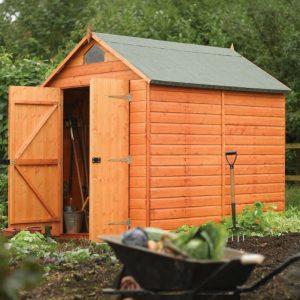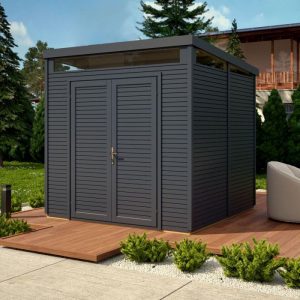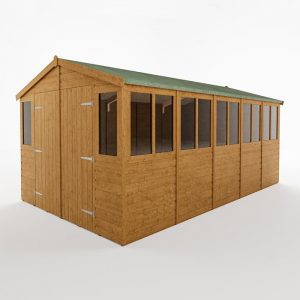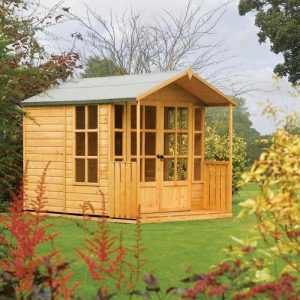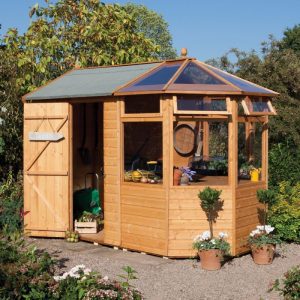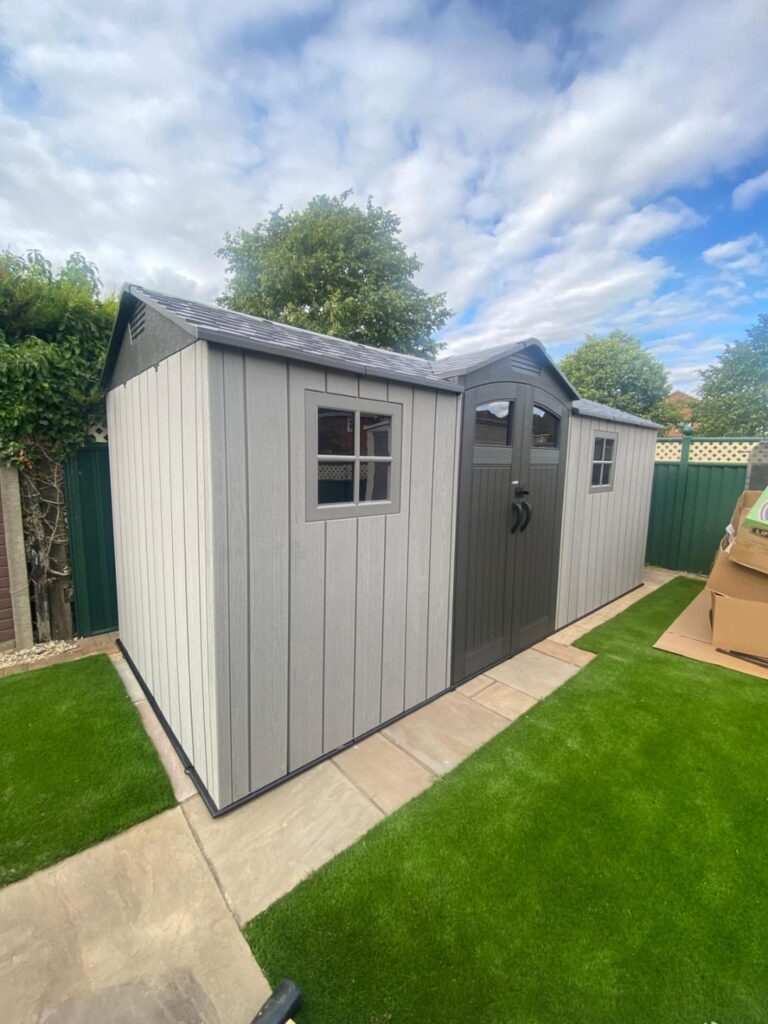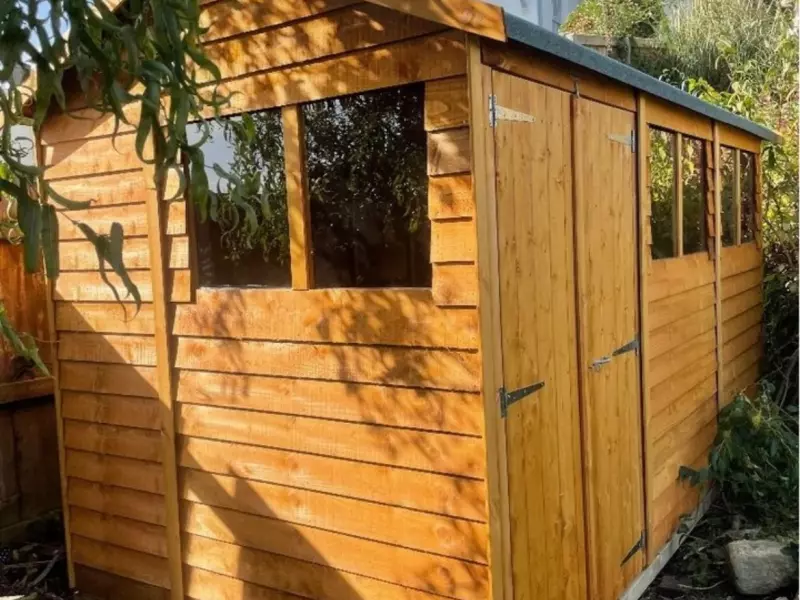Timber Sheds Tips and Advice – 2022
Timber Sheds Tips and Advice – 2022
Which Garden Sheds are best and how to choose?
While planning to purchase a garden shed, there are a number of things you need to consider before you choose to make sure; a, you get something that meets your needs and b, your get your money’s worth.
Whether you’re looking for a new shed to store in or as a garden office, we’ll cover all of the key points you should consider before you buy.
Types and styles of garden sheds
There are a few different types of sheds to choose from and most people often pick the style which they like the look of (which is absolutely fine), however, they each have their own features and benefits which may sway your decision.
An Apex shed has a sloping roof that peaks at the centre. Aesthetically they tend to look best when placed as a standalone building i.e. away from walls and fences and due to the extra support of the roof structure, they are often more sturdy than other shed types with flat roofs; this makes them excellent if your shed is going to be placed away from shelter from the elements. Apex sheds are also great for taller owners, with the highest point being across the centre. The roof space also creates additional internal area; excellent for long tools, or suspending items in the roof space.
A Pent shed features a flat roof which gently slopes towards the front or back. If you’re planning on situating your shed against a building, wall or fence then Pent sheds are a great choice as the roofs single slope allows any precipitation to naturally run off and away, minimising any risk of damp and rot..
Dutch Barns
Dutch Barn sheds definitely tick the “looks good” box. A relatively new phenomenon in the UK, these sheds have become a big hit with their distinct gabled roof which and extremely spacious interiors.
A garden workshop is essentially a large shed and can have apex, pent or Dutch roofs. Because workshops are larger in size they have ample space for crafting and tinkering. They are also very versatile and often are multi-purpose, for example adding a partition means you could have a storage section and a working section. We have helped create a lot of workspaces for businesses and hobbyists alike.
Similarly to workshops, summer houses are larger sheds and don’t have a specific roof style. Summer houses are generally used as a garden room, whether it be a quiet place to read, somewhere for guests to stay or your home office. What makes summer houses distinct is they usually have larger windows, allowing more natural light in as well as making it easier for you to admire your garden.
Sometimes referred to as gardeners shed, a potting shed is specifically designed for keen gardeners; often used for germinating seedlings and cultivating young plants/vegetables. They are an excellent alternative to a greenhouse, the glazed section of the shed allows in natural light, which heats the internal space, making it the perfect environment for young plants. Although primarily used for horticultural reasons, there is no reason they cannot also be used as a storage solution like a normal Apex of Pent shed.
Features and custom options
Prefabricated sheds are often cheaper however they don’t allow for much if any customisation. Buying made to order not only means you get the exact size you need, but you can request exactly which features you want.
Material options
Another important consideration when choosing your new shed is the material is made from. We make our sheds from wood so we’re naturally going to say wood is the best (which it is), but let’s go over why not all wood is made equal and how it stacks up against the other options.
Wood
Treated or untreated wood
Untreated is cheaper but won’t have any added protection against the elements and wood-boring insects, meaning it’ll decay sooner, require more maintenance and won’t last as long. In contrast, treated wood will have protection against these. There are two main types of treatment, dipped and pressure sealed. Again, dipped is a bit cheaper than pressure, however pressure treated wood is the best option as the treatment goes deeper into the wood, offering better protection and therefore your shed will require less maintenance and last longer. We have a guide here which goes into a bit more detail.
Wood thickness
The impact of wood thickness is pretty straightforward, thicker wood results in a sturdier shed. This means your shed can support more weight and survive whatever the weather throws at it (definitely something to consider now that heavy storms from the Atlantic are becoming more frequent – you don’t want to be chasing your shed around the garden!). Thicker wood sheds are often referred to as ‘heavy-duty’ or ‘super heavy-duty’, but just check their specs before you buy. Many manufacturers use 12mm tongue and groove walls and floor, however, if you’re wanting the best you should be looking around 20mm.
Better insulation
Wood is a natural insulator meaning a wooden shed will be warmer than metal or plastic in the colder months. Again, a thicker wood like 20mm will provide better insulation than a thinner wood.
Aesthetics
Looks are a personal preference; however, most people opt for wood as it is a natural product which sits better in their gardens.
Installation & repairs
Typically, installing a wooden shed is quicker and easier and should you need to replace a damaged panel, you can do just that, rather than having to replace the whole wall. if your DIY skills are lacking we have a professional installation team at hand.
The main draw of plastic sheds is that they are typically cheaper than the other options and for the most part is maintenance-free, it won’t rust, stain or rot. Its usually weighs less which makes moving and erecting a bit easier, however, because its lighter, it doesn’t stand up to heavy winds as well or bear as much weight. In hotter weather it can be a bit turn into a bit of an oven inside and over time in direct sunlight, the plastic can become brittle and crack. Often what put many people off of choosing plastic is that simply looks artificial.
Good quality metal sheds are very strong, which makes them great for security. Metal is highly fire-resistant so worth considering if you are going to be working with combustible materials or equipment.
Again we find that most find that metal isn’t as attractive as wood and is usually regarded as being pretty cold.
Good quality metal sheds are usually expensive, but it’s the only way we’d go if we were going with metal as it will have more protection against rust and corrosion.
Concrete
Concrete is the strongest material option and will probably have the longest lifespan. As with metal it’s great for security and is fire resistant.
Whether you consider it a pro or a con, concrete sheds are a permanent addition to your garden, as a result, you will probably need planning permission before you start.
Concrete sheds are difficult to construct for most people, meaning a contractor will need hiring. That combined with the planning permission fees and the cost of materials means concrete sheds are more expensive when compared to the other material options.
Often concrete sheds have an exterior pebbled style, again, aesthetics is a personal choice but many find the pebbled exterior to be a bit of a dated look.
Shed Location
Before you buy, you should also consider where the shed will be sited in your garden, you need to think about having a level base and if your placement will mean you require planning permission.
Also remember to think of how you’re going to use your shed, for example, if you’re wanting to convert your shed into a home office, you’ll need to consider where and how the power supply will get to your shed.
The base
Regardless of the size, style and material option you choose for your shed, have a solid and flat foundation is essential for making sure your shed has a long lifespan. Placing your shed on uneven ground will cause stress in the structure and result in compromised integrity over time.
There are multiple options for shed bases, however, concrete is the best choice. See our guide on the different types of shed bases and the pros and cons of each.
Planning permission
We’ve already covered using concrete to build your shed typically requires planning permission as it is a permanent structure, whereas the others are considered outhouses.
You generally don’t need to request planning permission unless your shed is going to be very tall or takes up over half of your garden.
Specific measurements can vary from council to council so if in doubt, most will have details on their websites.
Distance from walls and fences
If you have the space available in your garden, we’d recommend not placing your shed right up against a fence or wall. Simply as it makes maintenance of your shed much easier.
Placement against walls and fences can sometimes require planning permission, although usually more for against your home, which may require permission, again, check with your local authority for specifics.
The purpose of your shed
Now you know the in’s and out’s of sheds, now its time to match that up to your needs.
Storage
Whether you simply need to store your basic garden tools or summer garden furniture over winter, or kids toys when they are not being used then a basic waterproof (and maybe some insulation) shed could be what you are looking for.
Having a sturdy and affordable garden shed will meet your needs; we would typically recommend the lower cost associated with our Apex or Pent sheds, with the solid build of a heavy-duty frame for both security and peace of mind.
Hobbies and Working
As the name suggests a Workshop is a design for working and tinkering in. Larger in size and built with either heavy-duty or super heavy duty framing, these sheds can be easily insulated to be a great space for working, whether personal or professional.
Recreation and Living
Summer Houses are the perfect choice if you’re looking for a garden retreat to relax with a tipple and a good book as the larger windows provide plenty of natural light and a great view of your garden.
Like the Workshop, converting your Summer House into a garden room by insulating yourself can be a great way to make additional living space and a much lower cost than buying a prefab version, whether you want to a room for guests to stay, or just somewhere that you can enjoy all year round.
Gardening and cultivating plants
The Potting or Gardeners shed is the best option if you’re a keen gardener and need a sheltered place with plenty of light to give your plants the best start in life.
Still have questions?
We hope you have found this article helpful – if you have any other questions or would like our advice about choosing the right shed for your needs, then do get in touch.
Call us on 07720 323744 and we will be happy to discuss.

